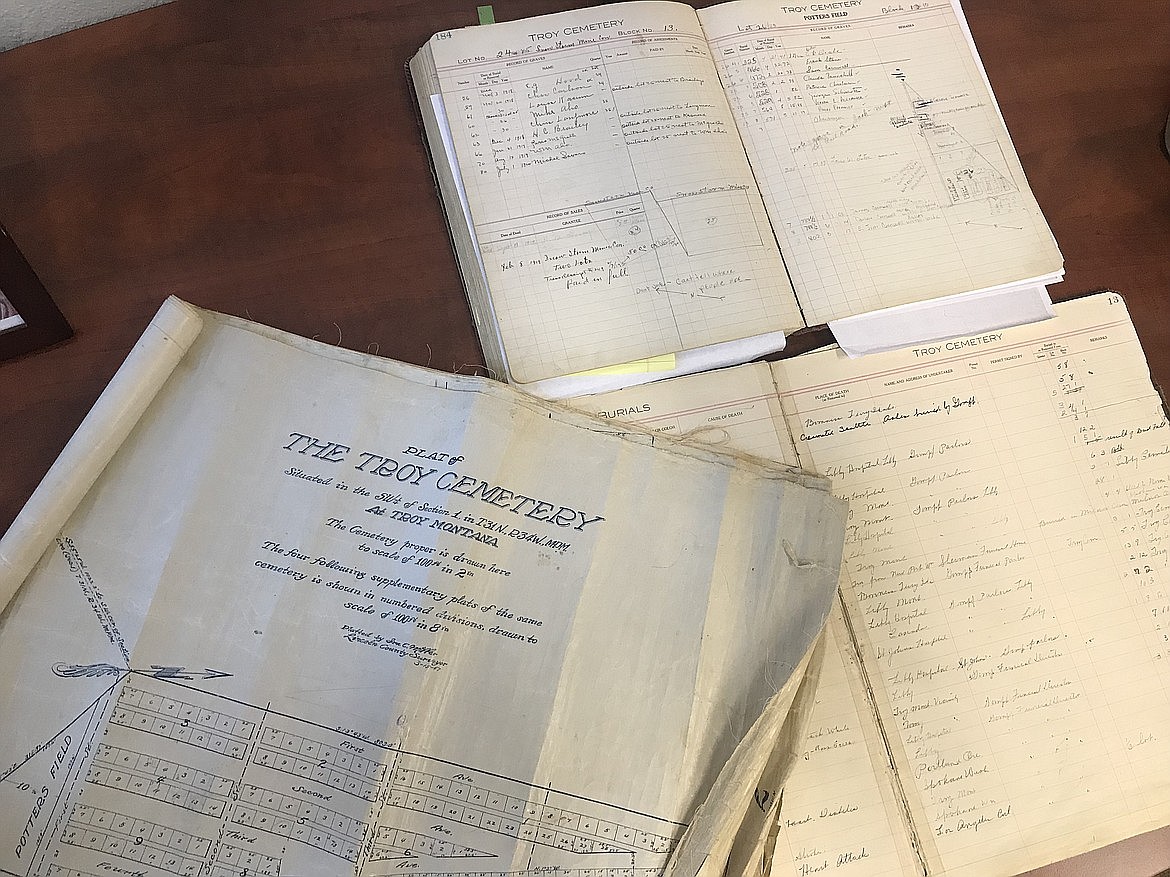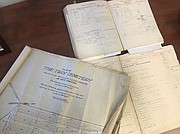Troy city clerk cracks open town's book of the dead
Few details remain about the life of Norman S. Artman beyond a single line entry on his death in a neatly ruled book in Troy City Hall.
Artman died after becoming “lost in the woods,” according to Troy’s Record of Burials. Apart from this cryptic fact, the book reveals only Artman’s sex, his final age, 38, and the date of his death, May 19, 1906.
Nearly every line in the book, which records deaths dating back to at least 1897 in terse cursive, presents a similar mystery.
“Geo” H. Paddock, 44, died after being “crushed at a millpond” in 1924. “A trap gun in the woods” brought Harry J. Davis, 22, to his demise in 1915. Genevieve W. Callow Bailey, 26, died due to an “operation” in 1917.
The barest entries even omit the person’s name or cause of death.
In April of 1912, two unidentified Finns gunned down a third unidentified Finn in front of the old Eureka Hotel. On an unrecorded date, gasses from a cinder pile at a roundhouse killed two unidentified men who were supposedly trying to warm themselves.
Ninety-year-old Margaret Bartrum, who would have been born before the British burned Washington in the war of 1812, died of unrecorded causes in 1902.
For decades, the tragedies listed in the record have offered little more than a glimpse into Troy’s gritty history as a frontier town. But recently, the book in conjunction with other city documents has proven critical in a push to digitize a map of Troy Cemetery.
Over the past two years, Tracy Rebo, Troy’s clerk and treasurer, and other city officials have paired entries in the record book with information from the cemetery plat and a catalog of plot sales to chart the layout of the city’s burying ground.
By pulling the coordinates of a person’s plot from the catalog and locating it in the plat, municipal employees have mapped names to otherwise unmarked graves. The record of burials then gives the clerks some information to include along with the person’s name in their Excel spreadsheet.
The process hasn’t been without its challenges. For example, city records are hazy on where certain residents who bought multiple plots are interred. One man named Paul Egan is buried somewhere within the eight plots he purchased.
Some plots belong to families who have moved away from Troy. While city officials are working to identify the next of kin, Rebo said the municipality likely won’t recover all the plots.
As of early November, Rebo’s map was still dotted with red marks indicating plots city officials are uncertain about.
“It’ll say one thing in one book and it says something totally different in the other,” said Rebo.
While finishing the digital chart will require more hours of flipping through the weathered records and sleuthing around the cemetery grounds, Rebo figured the end result would be worth the effort. For all the mysteries in the city’s Record of Burial, residents will be able to easily search the map to at least find the final resting places of Troy’s bygone characters.
“It’s taking a little time to get all the information in,” she said. “But I feel that once it’s in, it’s going to be so easy for us to be able to find the person.”



